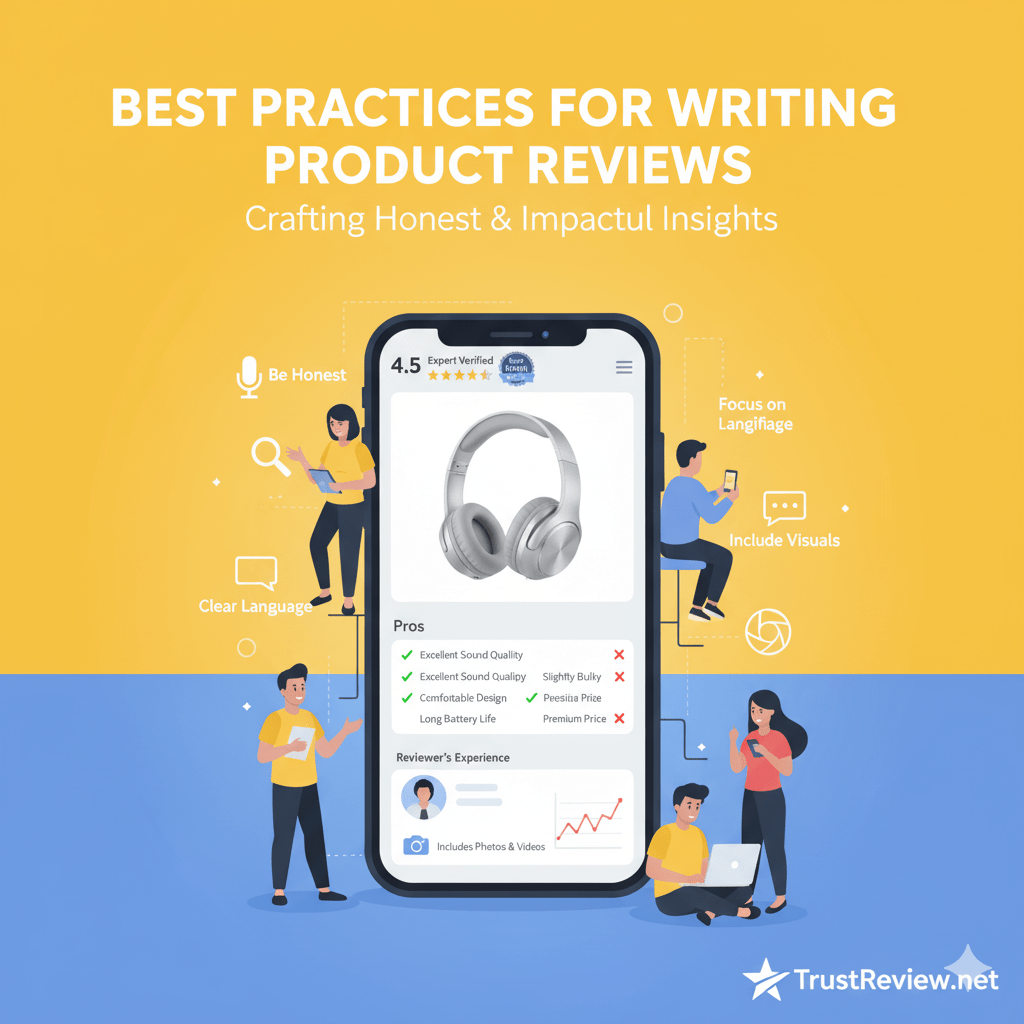Writing a product review may seem straightforward, but to create valuable and impactful content that helps consumers make informed decisions, it’s essential to follow certain best practices. An effective product review provides insights, helps establish credibility, and engages readers. Whether you’re writing a review for your own business or contributing to a platform like Trustreview.net, these best practices will ensure your review is both helpful and trustworthy.
1. Be Honest and Transparent
Honesty is the cornerstone of any great product review. Avoid exaggerating the product’s features or hiding its flaws. Customers value transparency and appreciate reviews that are grounded in real experiences. Whether the product exceeded your expectations or fell short in certain areas, it’s important to share both positives and negatives. This balanced approach helps to build trust with your audience.
Example:
“While the vacuum works exceptionally well on hardwood floors, it struggles a bit with high-pile carpets. However, for the price, it’s still a great value for those with hard floors.”
2. Focus on Specific Features
Vague statements like “It’s good” or “I love it” don’t provide much value. Instead, focus on specific features that stood out during your use of the product. Highlight elements like build quality, ease of use, durability, performance, and other relevant aspects. The more detailed you are, the more helpful the review will be for someone who is evaluating the product.
Example:
“The battery life lasts up to 12 hours on a single charge, and it only takes 30 minutes to recharge, which is a huge plus for anyone who’s always on the go.”
3. Use Clear and Simple Language
Make your review easy to read and understand by using clear and simple language. Avoid jargon unless it’s necessary and relevant to the product. The goal is to make your review accessible to a broad audience, including those who may not be familiar with technical terms or product-specific lingo.
Example:
“The phone’s camera quality is amazing, especially in low light. You don’t need to be a photography expert to get great photos with this device.”
4. Be Objective, Especially with Negative Feedback
While it’s important to mention the product’s flaws, make sure to do so in a constructive and objective way. If you’re dissatisfied with certain aspects, explain why and provide context. Avoid being overly harsh or dismissive. Constructive criticism helps other customers and the brand to understand what needs improvement.
Example:
“The shoes are very comfortable for daily wear, but the sole started to wear out after about three months, which is disappointing for the price.”
5. Provide Context for Your Experience
Every consumer’s experience is unique. Sharing how you used the product and in what context can provide valuable insights for others with similar needs or preferences. For example, did you use the product for a specific task, or did you encounter unique conditions while using it? Context makes your review more relatable.
Example:
“I used this camera for a family vacation, taking photos in varying lighting conditions. It performed well during the day, but in dim settings, the quality was not as great as expected.”
6. Mention Who the Product is Best Suited For
Help readers understand if the product is right for them. Does it cater to a specific demographic or set of needs? Providing a recommendation for who would benefit from the product makes your review even more helpful and relatable.
Example:
“This blender is perfect for those who want a quick, easy solution for smoothies. It’s not ideal for large families or those who need to blend large batches, but it’s great for individuals or small households.”
7. Include Photos or Videos
Visual content, such as photos or videos of the product in use, can significantly enhance your review. A picture is worth a thousand words, especially when it shows how the product performs in real-life conditions. Be sure to include clear, well-lit images, or even short demo videos that showcase the product’s features.
Example:
“Here’s a shot of the headphones in use at the gym, showing how well they stay in place despite intense movement.”
8. Provide Comparisons (If Relevant)
If you’ve used similar products, providing a comparison can help readers understand how the product stacks up against its competition. This could include comparing pricing, features, or performance with other popular items in the same category. However, ensure that the comparison is relevant and fair.
Example:
“Compared to other mid-range smartwatches, this one has a more accurate heart rate monitor and longer battery life, which makes it a solid choice for fitness enthusiasts.”
9. Be Concise but Thorough
While detail is important, don’t overwhelm readers with excessive information. Strike a balance between thoroughness and brevity. Aim to provide all the relevant details without making the review unnecessarily long or complicated.
Example:
“The laptop is fast, lightweight, and has a battery life of 8 hours. It’s perfect for students and professionals who need a portable device for daily tasks.”
10. Update Your Review (If Necessary)
Product experiences can change over time, especially if you’ve used the product for an extended period. If your initial opinion changes after continued use, go back and update your review. This provides an accurate and ongoing perspective that can help future buyers.
Example:
“Initially, the phone’s battery was decent, but after six months of use, it’s started to degrade significantly. I’ve updated my rating due to this change.”
Conclusion
By following these best practices, businesses and reviewers alike can write insightful and trustworthy product reviews. Remember, an effective review provides value to both potential customers and the brand. It should be honest, thorough, and respectful, offering insights that help others make informed purchasing decisions. If written correctly, product reviews can become powerful tools for influencing customer behavior and driving sales




Comments (0)